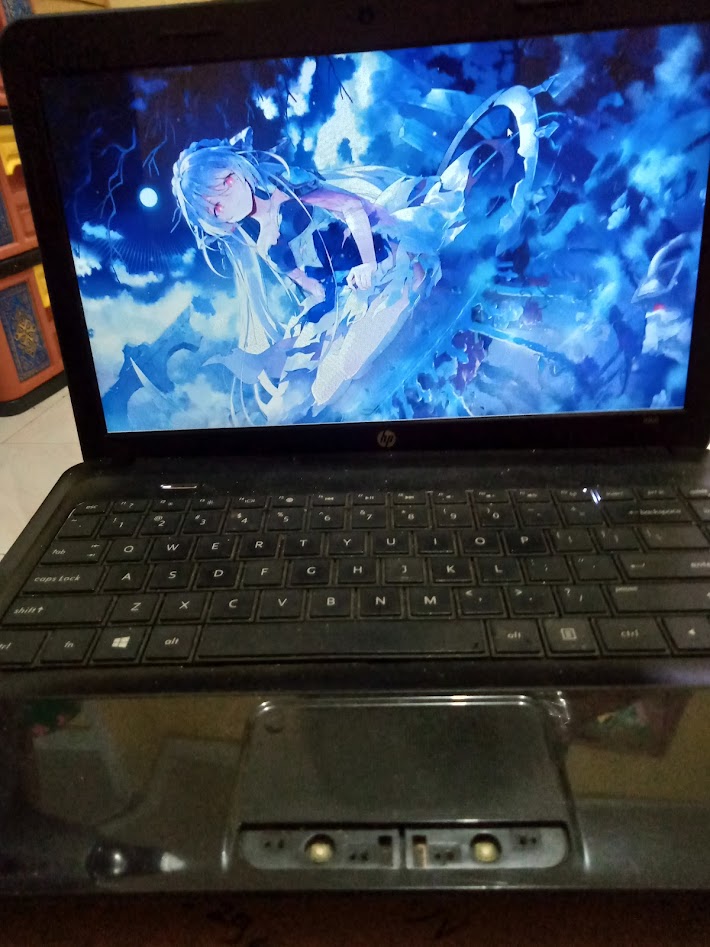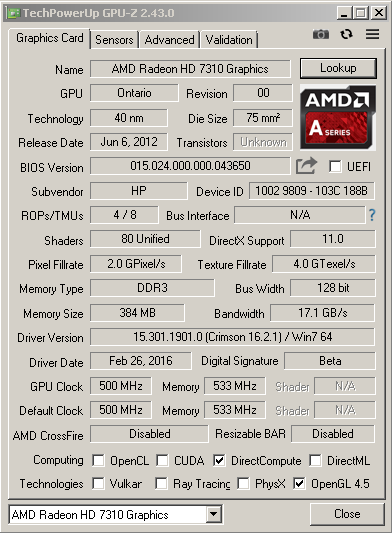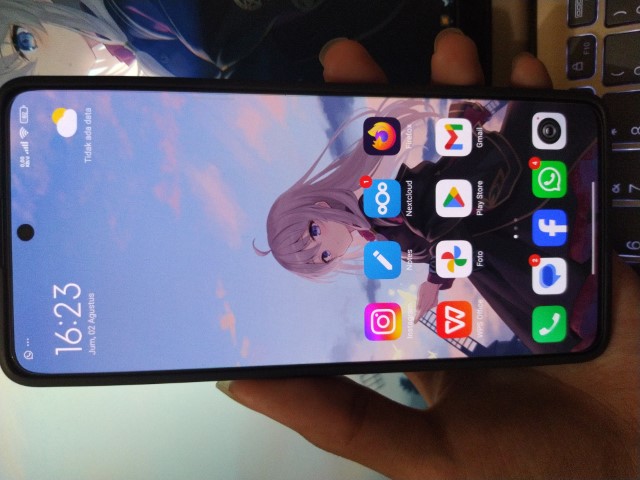Comparing: AMD Radeon HD 7310 vs Qualcomm Adreno 710
In this comparison, we analyze two Videocards: AMD Radeon HD 7310 and Qualcomm Adreno 710, using synthetic benchmark tests to evaluate their overall performance. This side-by-side comparison helps users understand which hardware delivers better value, speed, and efficiency based on standardized testing. Whether you're building a new system or upgrading an existing one, this benchmark-driven evaluation offers valuable insights to guide your decision.
Specification Comparison Table
This specification comparison presents technical details of several devices or components to help you understand the key differences between each option. Use this table as a reference to determine which device best suits your needs.
| Specification | AMD Radeon HD 7310 | Qualcomm Adreno 710 |
|---|---|---|
| Architecture | Terascale 2 | Adreno 700 |
| Codename | Ontario | - |
| Buswidth | - | - |
| Clock | 500 MHz - - | 800 MHz - - |
| Memory Clock | 384 DDR3 (SHARED) | - |
| Technology | 40 nm | 4 nm |
| Interface | IGP | IGP |
| Technology | 40 nm | 4 nm |
| Segment | Laptop | Mobile |
Submission Comparison Table
This submission comparison table displays the number and details of benchmark data submissions from various devices or components. This information helps you understand the performance based on the benchmarks that have been tested, as well as providing an overview of the consistency and popularity of the available benchmark results.
Submission Comparison Chart
This chart visualizes the benchmark scores comparison between two hardware devices based on submitted data.
Media Gallery
A collection of photos of tested hardware. These images can help you identify the physical form, model, and variant of the hardware in question. These photos are from our own documentation, and if they are not available we may not be able to document them.
About Hardware AMD Radeon HD 7310
The AMD Radeon HD 7310 is an entry-level integrated graphics processor (IGP) that is part of the AMD E1-1200 APU, launched in 2012 for budget-oriented laptops. Based on the Terascale 2 architecture, the Radeon HD 7310 features 80 stream processors (shaders) and runs at a clock speed of up to 500 MHz. While modest in terms of raw power, this GPU was designed to handle essential computing needs with minimal power consumption, making it ideal for ultraportable laptops and low-cost netbooks of its era.
The Radeon HD 7310 supports DirectX 11 and UVD3 (Unified Video Decoder) for smooth HD video playback, making it fairly capable for multimedia tasks such as watching YouTube videos or playing DVDs. However, it does not have dedicated VRAM, relying instead on shared system memory, which means that its performance is significantly influenced by the RAM configuration single-channel DDR3 memory limits its potential, while a dual-channel setup can offer slightly better bandwidth for graphical tasks.
In terms of gaming, the HD 7310 is only suitable for very light or older games, and even then, users will need to lower the resolution and graphics settings to achieve playable frame rates. Titles like Plants vs. Zombies, Angry Birds, or older 2D games can run reasonably well, but 3D games or anything newer than 2012 will likely struggle. The GPU’s aging architecture also limits compatibility and performance in modern applications and web-based 3D content.
Despite its limitations, the Radeon HD 7310 can still serve a purpose in legacy laptops such as the HP 1000 1b05au, especially for users who need a machine for basic productivity tasks, internet browsing, and light media consumption on older operating systems like Windows 7 or Windows 8. For budget-conscious users who still own or restore older laptops, this GPU represents a practical, if dated, solution for everyday computing.
Hardware Detail:
Device: HP 1000 1b05au
CPU: AMD E1-1200
RAM: 4GB DDR3 Single Channel 2 DIMM
OS: Windows 7, Windows 8
Wednesday, 26 December 2012 14:27:36 | Update: 1 month ago
About Hardware Qualcomm Adreno 710
Qualcomm Adreno 710 is an integrated GPU (Graphics Processing Unit) used in the Snapdragon 7s Gen 2 chipset. Designed to provide an optimal balance between graphics performance and power efficiency, Adreno 710 is one of the best GPU solutions in the mid-range class, suitable for users who prioritize a smooth visual experience in both everyday use and when playing games and multimedia.
In synthetic benchmark testing using the Xiaomi Redmi Note 13 Pro 5G device featuring the Snapdragon 7s Gen 2, the Adreno 710's performance proved to be competitive. On AnTuTu Benchmark v10, the Adreno 710 achieved a GPU score of 116,839 points, indicating that this GPU can run popular games like Mobile Legends, PUBG Mobile, and Genshin Impact smoothly at medium graphics settings.
Additionally, in Geekbench 6 Compute testing, the Adreno 710 achieved a score of 1,729 points, measuring GPU-based computational capabilities in modern scenarios such as image processing and light machine learning. For gaming benchmarks, the 3DMark Wild Life Extreme, which simulates heavy graphical loads, yields a score of 792 points, while the 3DMark Sling Shot Extreme Unlimited records a score of 4,672 points. These figures indicate that the Adreno 710 is capable of handling games with complex graphics, though for AAA games on mobile, it may be necessary to lower visual quality to maintain frame rate stability.
The Adreno 710 also supports modern graphics APIs such as Vulkan, OpenGL ES, and OpenCL, making it compatible with a wide range of the latest apps and games on Android. Users will also benefit from good power efficiency, as this GPU is built on the same 4nm architecture as the Snapdragon 7s Gen 2 chipset, helping to reduce heat and extend battery life during heavy use.
Overall, the Qualcomm Adreno 710 is an integrated GPU that offers solid performance in the mid-range. It is suitable for users who want to enjoy smooth graphics, seamless multitasking, and optimal battery life without having to sacrifice gaming performance entirely. With the latest technology support and adequate benchmark results, the Adreno 710 is a significant added value to Snapdragon 7s Gen 2-based devices.
Device Test (testbed):
Device: Xiaomi Redmi Note 13 Pro 5G
Specs: Snapdragon 7s Gen 2, 256GB UFS, 8GB RAM
OS: Xiaomi HyperOS 1 (Android 14)
* Testing device in new condition, latest benchmark software, and latest system updates
Wednesday, 09 July 2025 23:18:17 | Update: 1 week ago





